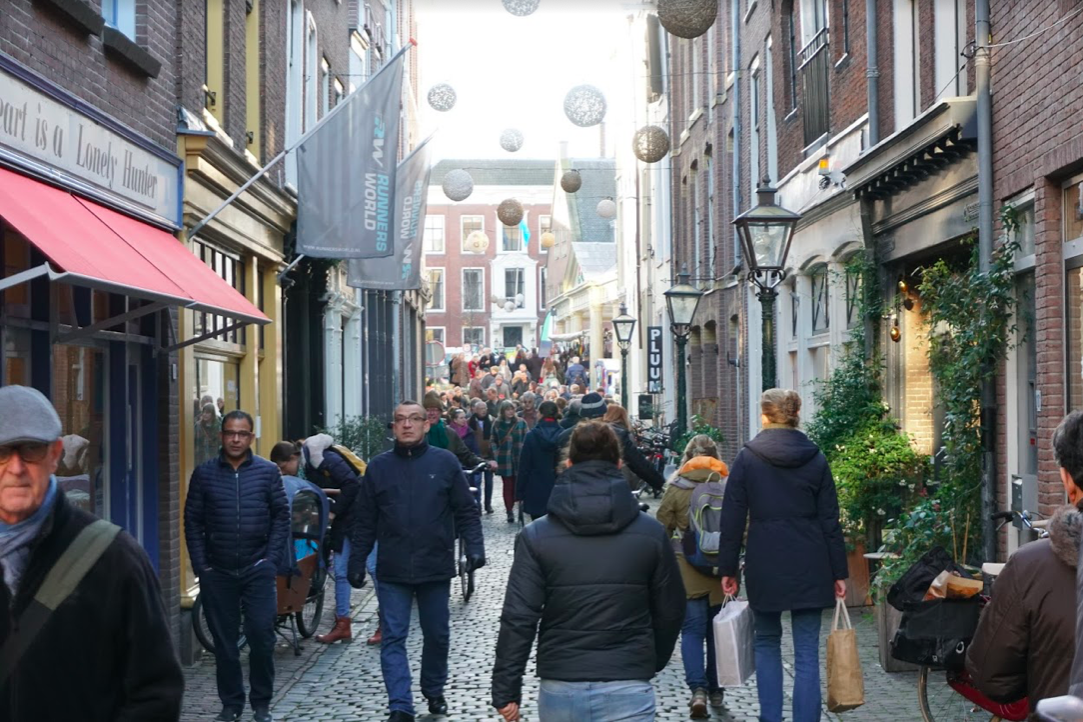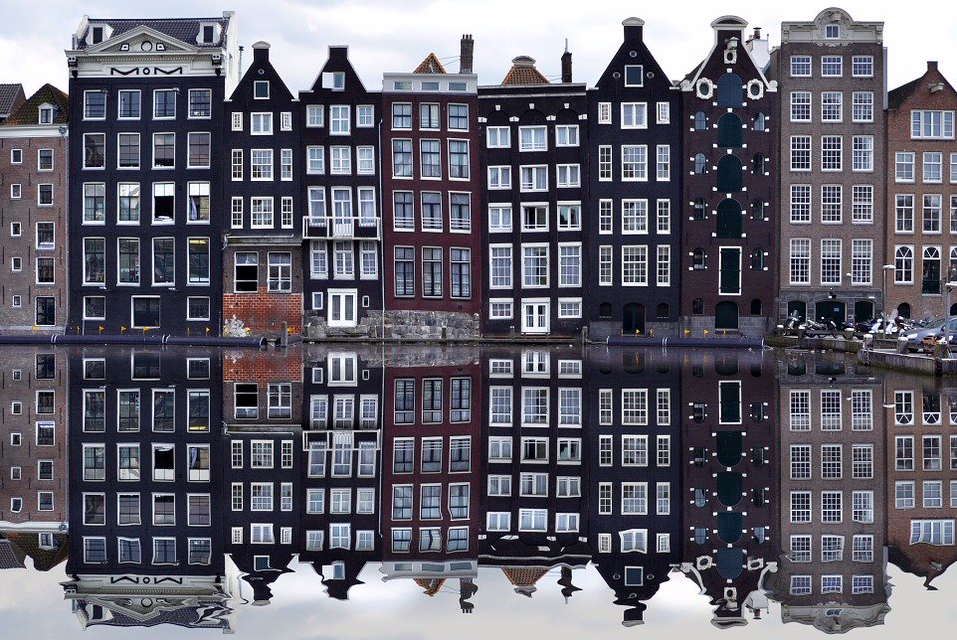There is a huge housing crisis in the Netherlands. In the major cities, finding a place to live is expensive and difficult.
Particularly for people who want to buy their first Dutch home, the market has become a nightmare over the past five to ten years. A combination of registration regulations, population growth, and privatisation has left the Netherlands with way less affordable housing than it needs.
Technically speaking, to meet the Dutch housing demands, the government would have to build 845,000 homes by 2030. It’s estimated that by this time, the country will have about 18.8 million inhabitants. This is on top of the housing shortage that is already going on.
READ MORE | Enough is enough: thousands of protestors in Amsterdam march against the housing crisis
The Dutch housing crisis: is it a big deal?
The impacts of this problem are numerous and serious. Firstly, the most obvious one: rising house prices. With rising house prices, it becomes more difficult for first-time buyers to enter the market — and if they do manage to buy a home, they risk negative equity if housing prices drop again.
The housing shortage also impacts social housing: while working-class families tend to be taken care of, single individuals have a hard time getting a roof over their heads. Furthermore, homelessness is on the rise and particularly students struggle to find affordable housing.
READ MORE | If you’re homeless in the Netherlands, what support is out there?
While the problem is nationwide, the major Randstad cities are particularly under pressure, with Amsterdam, of course, leading the way. Utrecht, The Hague, Rotterdam and Groningen are also struggling to house their inhabitants affordably.
Housing shortage in the Netherlands: the nitrogen crisis and a lack of building permits
Ah, our favourite topic: the Dutch nitrogen crisis. But what does the housing crisis have to do with the nitrogen crisis?
Well, the Netherlands has been struggling with too many nitrates in the air for years now. In 2019 it all came to a head. Farmers and their tractors were out on the streets to protest, but so were construction workers, at least a couple of times.

The reason behind the construction workers’ protests were the new nitrogen regulations — namely the PFAS standard — imposed by the government to deal with the untenably high levels of nitrogen being emitted.
For the construction industry, these regulations meant that around 18,000 building projects had to be delayed because they breached EU law, according to Reuters. Good for the environment, terrible for a country that is in desperate need of more housing.
Following more protests, these regulations were eventually rolled back. However, it still takes two years from the granting of a permit to a house being ready to live in, so we are likely to be dealing with the effects of these regulations into 2022 and onwards.
Housing shortage in the Netherlands: lack of free space
The Netherlands is small, I think we can all agree on this. It also makes very economical use of its land, being the second biggest exporter of food produce in the world, just after the US. Agricultural space takes up 53 percent of the Netherlands. Add in the occasional nature reserve (also under threat because of the nitrogen crisis, by the way) and you’re not left with very much space at all.
That means that building permits are naturally hard to come by. It is vital to protect nature reserves, even as the housing crisis takes hold. Not only do they provide sanctuary for wildlife that has otherwise been evicted from this highly urbanised country, but they also provide value to people as places to relax and exercise. There’s no point in building new houses in a country that isn’t liveable otherwise.
READ MORE | Hiking in The Hague: 11 nature spots for the outdoor adventurer
Who is behind the Dutch housing crisis? Partly investors
The Netherlands has failed to deal effectively and fairly with property investors. A study commissioned by the ministry, and carried out by the Land Registry and the University of Amsterdam, showed that in areas where investors were buying more than 20 per cent of the properties that came on the market, they were able to manipulate the market so that they paid less per property than first time buyers or ordinary people moving house.
These areas include what you would expect: Amsterdam, Groningen, The Hague, Utrecht, Rotterdam and Eindhoven.
Another culprit of the Dutch housing crisis: Airbnbs and tourism
In many cities around the world, the rising popularity of Airbnb has caused housing shortages where there were none before, and worsened already existing shortages. The easy money available from tourists persuaded many to convert properties into Airbnbs: but that left the locals short on places to, well, live.

In the Netherlands, and particularly in Amsterdam, which suffers from over-tourism as a rule, Airbnbs created a real problem for local people. Thankfully, since July 2020, the Dutch government has implemented an outright ban on Airbnb rentals in three districts of the capital.
On top of this, renting out your property as a holiday rental in the rest of the city is only possible with a permit and can no longer be allowed for more than 30 days of the year.
Tighter lending regulations don’t make the Dutch housing shortage any better
There are also some tighter lending regulations at play. These don’t necessarily mean that fewer houses are built, but what they do mean is that unless the housing crisis is resolved by building new houses, potential buyers are in a much worse position.
Dutch banks are only allowed to lend buyers the value of the house they buy as a mortgage, which is sensible. The problem with that, though, is the extra costs that are incurred when you buy a house. For first-time buyers on a middle-sized income between €30,000 and €40,000 per year, those are big costs to incur. That means that people in this income bracket need to save for a long time before buying a house, so they’re left renting for longer than is ideal.
The population is increasing, which means the Dutch housing shortage is getting worse
The population in the Netherlands is increasing, so more housing is necessary. There are two reasons for this: natural population growth (though in the Netherlands, this is fairly low) and immigration.

The Netherlands has become home to lots of international students and expats over the past decade. Both tend to congregate around the Randstad, but even in Tilburg and Wageningen, both decidedly not in the Randstad, students have needed to camp out because the housing shortage was so bad in these cities.
So how do we deal with the housing shortage in the Netherlands? 8 possibilities
1. Building more houses
The people in the back are likely already screaming “jUst BuILd mORe HoUsEs” — but it’s nowhere near that simple.
Crises don’t tend to occur when there are simple answers to the problem at hand. For one thing, the government doesn’t build houses or give out housing permits.
It’s the local government, the municipalities, that give out the permits to developers to build new houses. Unfortunately, many Dutch municipalities are dragging their feet on that matter and there is also limited space available within Dutch urban areas.
2. Centralising control
Given the number of control municipalities currently have (and their ineffectiveness in dealing with the housing crisis), part of the solution could be transferring some of that power to the central government.
3. More affordable types of houses should be built
The housing crisis could also be ameliorated by changing the types of houses being built. First-time buyers are having a hard time getting on the property ladder: houses are too expensive, and the wrong size.

4. Build more family homes and also smaller apartments
Most people want to buy a house, rather than an apartment, and also want a place with a small garden. That is not, however, what is most often being built. Apartments are most commonly constructed because they are cheap and don’t take up as much space as these terraced houses.
On the other side of the debate, there is also the fact that a lot of apartments are also not small enough: as more and more people choose to live alone, smaller apartments are becoming more desirable.
5. Building tiny houses (and offices)
Although far a solution that supports the status quo, another solution to the Netherlands’ housing crisis might be tiny homes. An emerging phenomenon in the western world, the concept originated in the US, where many people have enormous homes filled with stuff.
Minimalists and those in search of a simpler way of life were attracted to the concept of tiny homes: which have now made their way to the Netherlands.
We interviewed some tiny home inhabitants, so if you want to know what life is like in a house the size of a garden shed, then we’ve got you covered. Tiny offices have also started to emerge onto the scene.
6. Cannabis concrete?
Dutch innovation rarely lets us down, and that also rings true for the housing crisis. A company called Dun Agro constructed the first prefab house made from hemp back in September 2019. Given the current number of hemp farms in the Netherlands, the building company believes it could be possible to construct up to 500 of these hemp houses each year.
That wouldn’t solve the housing crisis, but every little bit helps. (And who doesn’t want to tell their scandalised family back home that they live in a house made of cannabis concrete?)
7. Get rid of those dang chickens
Other proposed solutions have included major changes to the Dutch agricultural model. In 2019, leftist political party D66 proposed to half the number of livestock. Apart from the sheer amount of space they take up, commercially farmed animals produce a lot of nitrogen. (Aha, it’s the nitrogen crisis again!)
By halving the number of animals, D66 had hoped to allow more building to take place as a result of the drop in nitrogen output. But the plan was almost universally denounced and was followed by months of protests by farmers.
8. Tax relief for first-time buyers
And, finally, there are tax measures that could be taken to make it easier for people to buy for the first time, even if that in itself would not add to the amount of housing on the market. The government has already taken some steps in the right direction and as of January 1, 2021, buyers aged, between 18 and 35 no longer have to pay the 2% transfer tax.
What has your experience of the Dutch housing market been? Let us know in the comments below.
Feature Image: djedj/Pixabay
Editor’s Note: This article was originally published in January 2020, and was fully updated in May 2022 for your reading pleasure.

Don’t make houses smaller, please. I have trouble sleeping and working in a tiny room in Hong Kong. A spacious room give you space to stretch both your eyes and limbs.
Agree, I live and work in 21m2 studio in A’dam, can’t imagine less…
More apartments are needed and less houses with gardens. In addition to this, being the 2nd largest food exporters is ridiculous for such a small and congested nation.
Investors manipulating the market are the only reason worth dealing with. All other reasons and solutions are small compared to how they manipulate the market. Solve this and you will solve the housing problem.
But I think we’re focusing on wrong investors.
An average Joe who has a second house, that he rents out doesn’t make much damage, but look at the nice modern rental buildings in Amsterdam – most of them are owned by one or two big investors. Same with new residential constructions – all the power in one hands.
Then they can do with the market whatever they want and my guess is they have money to lobby in the city or every at the national level.
Supply and demand: Those with the assets are profiting from limiting supply.
Even before the new nitrogen excuses housing permits were not being issued fast enough.
2020 thanks to covid nitogen output fell, housing permits have not increased. In fact further obsitcals were added such as tigher mortgage requirements.
Its obviously a boomer scam, 30 years of under investment in infrastructure and housing isn’t an accident. The boomers will take more than thier fair share of pensions too before leaving us all to burn in an environmental disaster.
We should be prosecuting the boomers now, each time housing quotas for permits are not issued the boomers should compensate the following generations.
Could you provide your sources please?
Kind Regards
I agree!!!
The bubble will pop and the prices will come tumbling down. The question is when?
When people die, probably we will see a reduction of the population soon and “fix” the problem.
Note: I am serious
There need to be more skyscrapers, and less traditional houses.
Even though I’m looking to buy a traditional house, but skyscrapers can house 100x more.
I’ve heard arguments against skyscrapers:
1. They ruin the city look.
Well good luck with finding a house then.
2. The soil doesn’t help.
Well, the Dutch reclaimed land from the sea, they can find a solution for the soil.
Problem is everyone in the Netherlands wants a house and only old people and students choose apartments… Apartments should be the norm instead of houses even in smaller cities. Else all the farmland have to converted to houses and their gardens.
Big elephant in the room here, of both types. Still who needs the Dutch, not the Dutch it seems.
How come the comments were written way earlier than the article itself? An old article, it seems?
Hi, Mimi! Indeed, we update our articles frequently to make sure the information is as accurate for the current times as possible.
The situation has also caused chaos for students who were accepted to university in Amsterdam. The University of Amsterdam actually sent out a letter telling students not to come!! As the school was already late with admissions, the situation is causing students to skip their school year or drop out altogether as apartment owners are giving priority to Dutch residents and/or gouging international students.
Rent controls on private housing is making the problem worst as owners sell their apartments are they have negative investments. Such a populist, misguided policy, that has never ever worked. They should cap rent increases to a couple of points above inflation as to avoid price scalping, but provide a price signal to increase offer and lower prices in the long term.
totally agree!
Another thing that if you’re forced to sign max. 24 month contracts, your rent increases much more by moving flats than it would increase normally by yearly increase by a long-therm landlord
Loosen the regulations!
The restrictions around registration etc. No other country has it as crazy as here.
If I was on a tight budget I’d love to share my flat with more people (which I actually did in my 20s while living in Germany or UK), but here it’s impossible due to regulations. Also while renting a room I’d prefer to have a contract just for that room instead of being forced to sign a contract for the entire flat with a stranger (my future flatmate).
Another thing is the “tenant protection” saying that after 2 years of renting you gain some extra rights, that only caused the house owners never signing contracts longer than 2 years. Hence, you have to look for a new flat and move at least every 2 years (on top of wasted time, your rent will probably be much higher than a yearly rent increase by your old tenant), but of course the law makers are fighting the crisis…